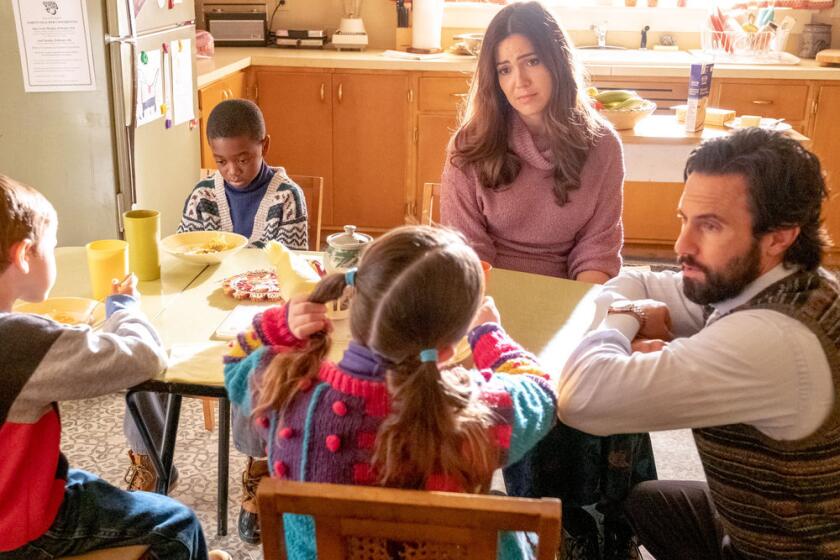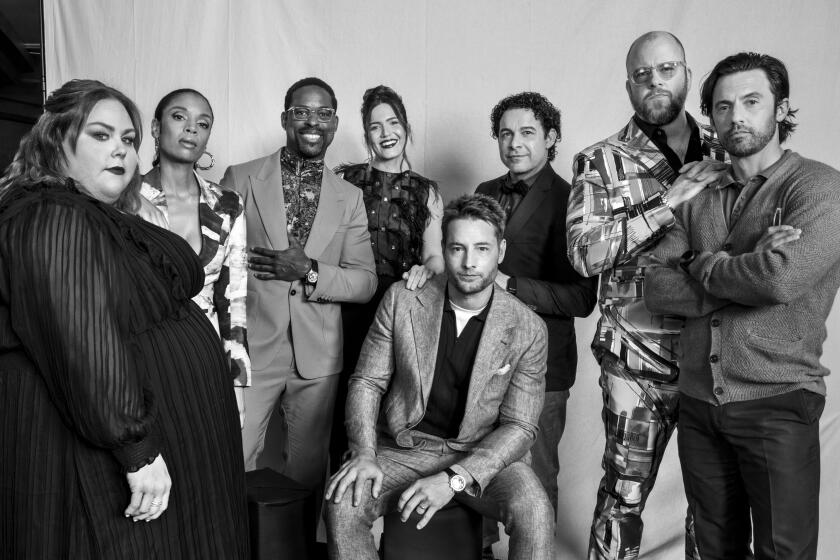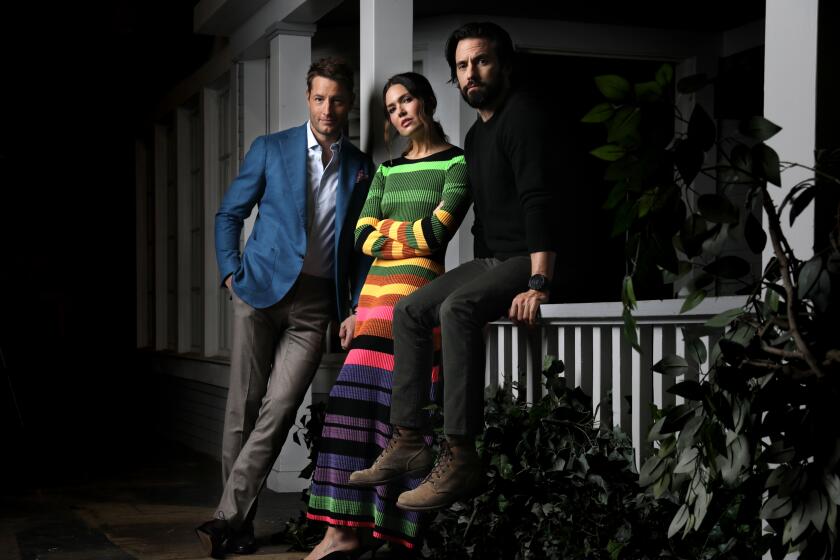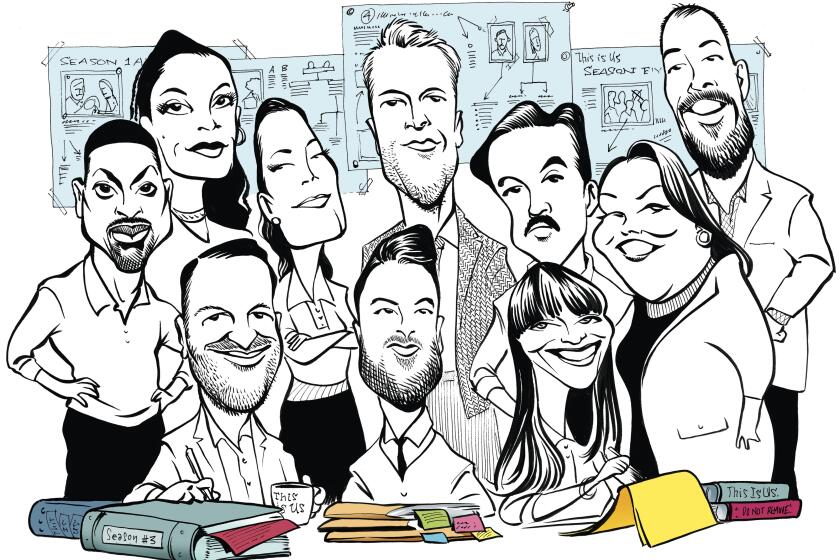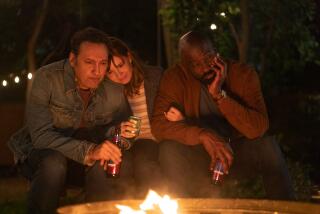‘We missed the shot’: ‘This Is Us’ boss breaks down that deceptively simple finale
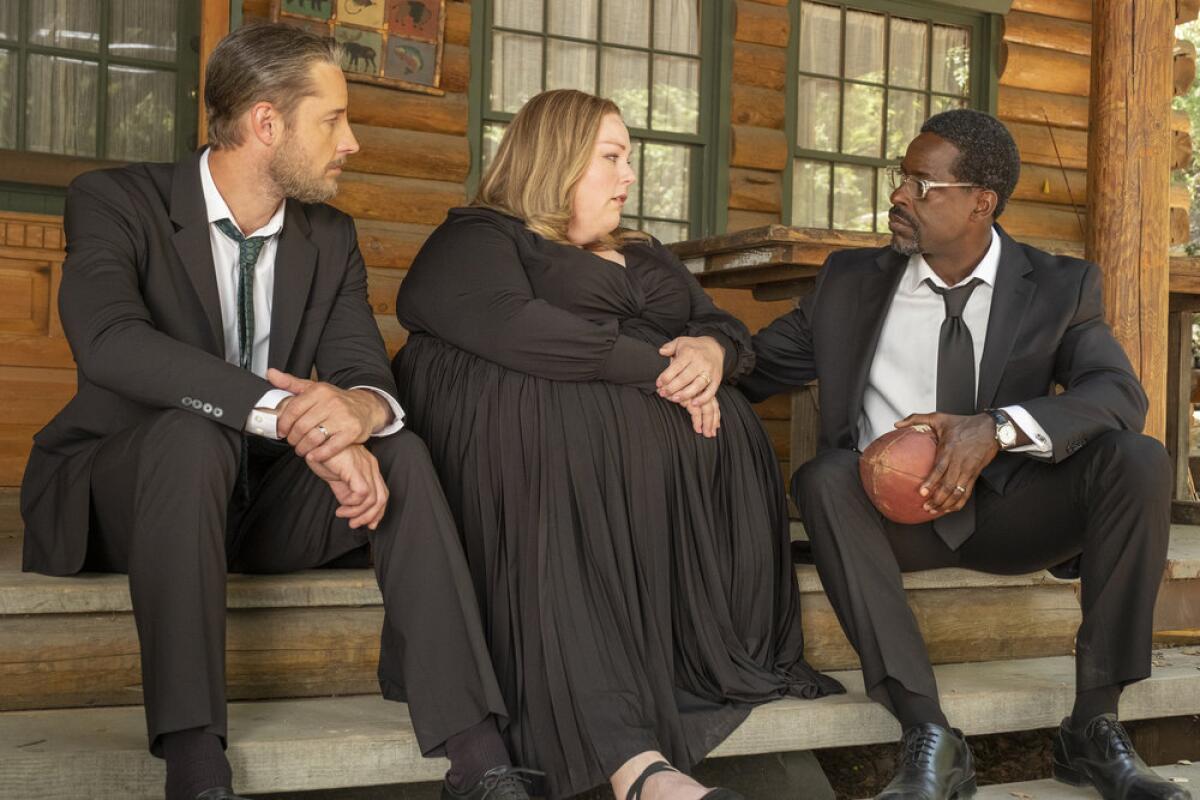
It’s a couple of days into filming the final episode of “This Is Us” — the present-day scenes, anyway — and the show is at its home base on the Paramount Studios lot in Los Angeles. Just outside Stage 30, which houses the interior of the swanky home Kevin Pearson (Justin Hartley) built adjacent to the family cabin, the show’s creator and emotional architect Dan Fogelman greets me with a bit of multilayered gallows humor: “Get ready to see everybody die!”
The passing of the show’s beloved family matriarch, played by Mandy Moore, is still fresh. The day before, the cast and crew were still shooting parts of the tearful penultimate episode, partly set on a metaphorical train where a younger version of Rebecca Pearson reminisces about her life and her impact on her loved ones before taking her final breath.
But that’s not how the story ends for “This Is Us.”
The heartfelt series finale, titled “Us,” feels like going through old photos after the death of a loved one. It’s a fitting conclusion to the NBC drama’s tender and often surprising story, steered over six seasons of twists and turns — a way to show that everyone in the Pearson family will be OK. And that we will too.
The twisty, tearjerking family drama’s sixth and final season premieres Tuesday. Re-live all your favorite moments with our guide.
Directed by Ken Olin, the bulk of the episode takes place in the past, with the show’s beloved mom and dad, Rebecca and Jack, enjoying a day free of obligations with their kids, including playing pin the tail on the donkey, a memory older Rebecca was fearful of losing. In the present, her adult kids and their families are grappling with her death and trying to make sense of how their lives will continue on.
On this late April day on set, some of the cast — Sterling K. Brown, Chrissy Metz, Susan Kelechi Watson, Chris Sullivan and Chris Geere — are on deck for brief scenes. Before Metz and Sullivan, who play ex-spouses Kate and Toby, begin their heart-to-heart, they pull Fogelman aside to make sure they understand that the tone of their interaction is platonic: “We’re not alluding to anything, right?” During a brief break between shots, Fogelman hands me his phone. Playing on the screen is footage of Jack (Milo Ventimiglia) guiding a young Kevin (Parker Bates) and Randall (Lonnie Chavis) through their first face-shaving experience.
Fogelman is seated behind media village, where an array of screens display what’s being filmed, inside Rebecca’s room. Blankets and quilts are tucked into her hospital bed, which is pushed up against the wall. At one point, Fogelman shows off a gift he’s just received from a crew member — a miniature replica of the Pearsons’ living room that plays the pilot episode on the tiny television: “It’s pretty cool, right?”
That wistfulness about bringing a beloved family drama to an end is shared by all. “I just have to open the lever on the way home and the way to work,” Metz said. “I listen to sad music — our soundtrack — and let it out. I don’t want anyone to hospitalize me on the last day ’cause I know how I am. Shooting the funeral stuff, there’s no need to prepare, because we’re all grieving the death of the show.”
Shortly before Tuesday’s series finale aired, Fogelman and I talked again about “This Is Us,” executing the vision he had for the finale and the moment he finally let himself get emotional about the ending. The following has been edited for length and clarity.
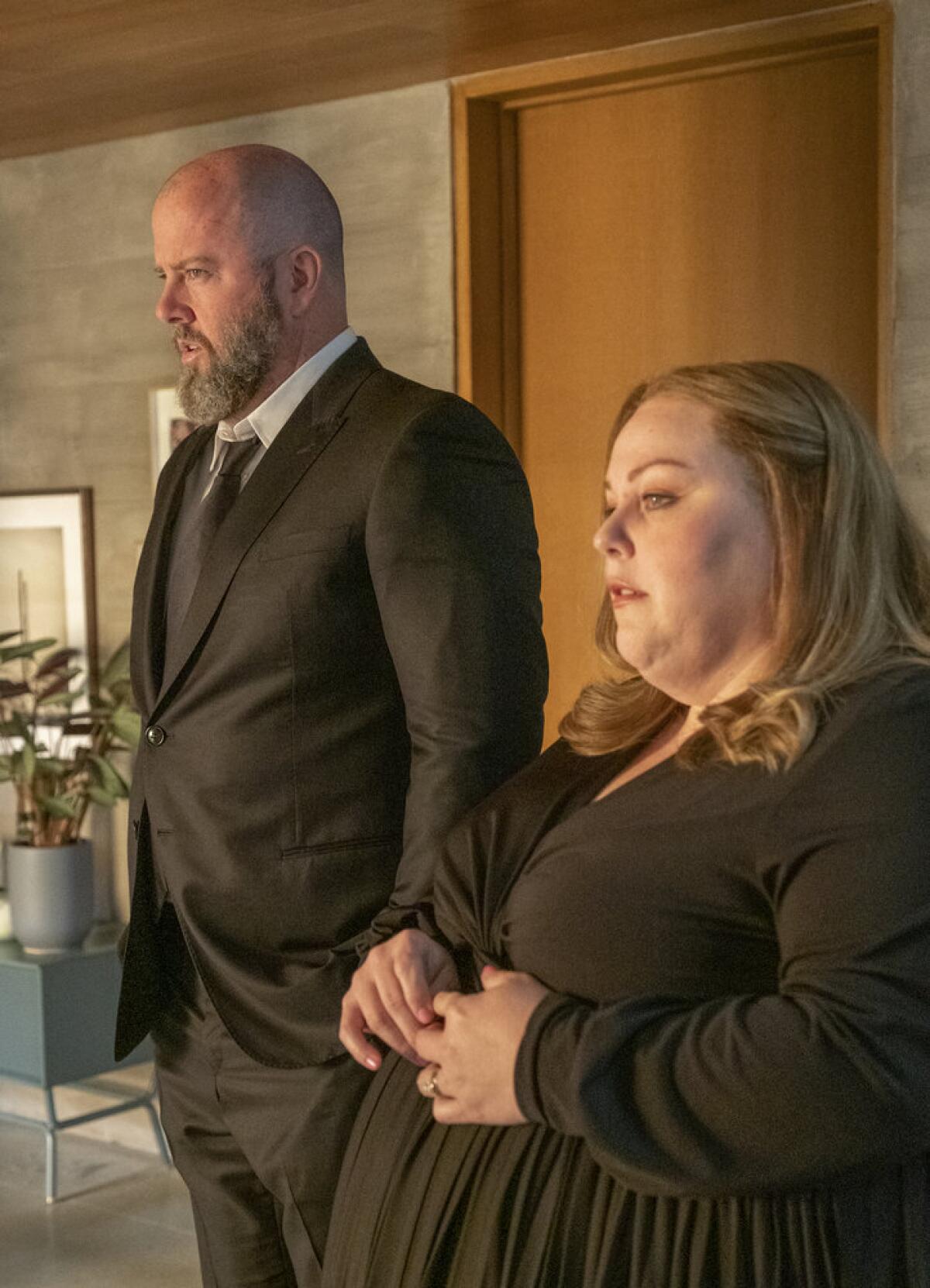
Since these final two episodes worked in tandem, I want to start with the train. What did you want to capture with Rebecca’s transition of life? How and when did the idea of the train metaphor click into place?
A few things were very important to me: that Rebecca actually passes at the end of the second-to-last episode so that the show is not ending with somebody dying, but still absolutely fitting the theme of the show, which is what happens when you move forward after that. And I was looking for a metaphor at the beginning of the season. I’ve been taking my little boy a lot to Travel Town, which is this place of all these trains in Los Angeles. And I’ve always been kind of struck by the mystique and romance of trains. One day, one of our executive producers and a writer who’s been with me since the beginning, K.J. Steinberg, said, “I have a weird idea. What if that was the representation of Rebecca’s journey — her being on a train, something that’s tied [to] her childhood?” That immediately locked in for me. That is where it came from.
But globally, I had spent a fair amount of time at people’s bedsides who were at the end. And it’s obviously this very intense experience, especially when it’s one of your people. And there’s something big and sweeping and strangely beautiful about the entire thing when you’re looking at it with perspective — when you’re looking back on it. When we first started the show, one of the directors of the pilot, John Requa, called those type of moments “life at full volume.” It’s like reading a great book, when your mind goes cold, totally focused, and you’re present. And you’re aware you’re inside of a moment that will further mark your life. I wanted to capture that on both sides — the person that is sitting at the bedside, and then the person who’s passing.
With that episode, you also gave us one final twist. Returning to that fateful Super Bowl Sunday, we’re introduced to another family and a young man named Marcus, whose life was saved the night Jack died. Was that something that had been brewing for a while?
It had been. I thought this type of twist in storytelling would happen again in that second-to-last episode, our last little magic trick. And hoped it would speak thematically to what we’ve always tried to say on the show, which is that the good and bad coexist and dance with one another. When I’ve lost somebody in a hospital setting, I’ve constantly been struck by the amount of things happening in that same building at the same time. One floor down there are children being born, and the day is being marked as the craziest and most important and best day of a family’s life, as somebody’s world is getting rocked by losing their favorite person.
People were really expecting Marcus to be the father of Déjà’s baby.
That’s meant to be the confusion. And the twist is that you’re misdirecting the entire episode with this guy who was working all the time, he’s heading towards Déjà’s doorstep and is the father of her child. And the reveal, obviously, was that it was Malik all along. This guy has a different connection to the Pearson family than you thought you’re watching. Sometimes it surprises you when you do these twists, and we’ve done them in the past, and when the takeaway you want is not happening. I think some people said: “I think that’s Déjà’s son!” And you’re like: Have we not been clear enough?
The pilot, I showed it to my sister and my stepmother and my father. [My] sister was so enamored of it. And my stepmom was going, “Oh, my God, Danny, this is the one, this is the one!” And my dad’s going, “Very good, very good,” and they’re chattering about it, and 40 seconds go by and all of a sudden my father blurts out: “They’re all related?!”
With the series end, the cast shares memories of the family drama’s six seasons and all its ups and downs.
Did you get any pushback about using this final hour as a kind of epilogue, zooming in once more on the small moments that have been vital to the show’s DNA and that Rebecca was most afraid of not remembering?
No, never any pushback. We’ve been given the creative freedom throughout this entire process. I always felt that this is the way I wanted the show to end. While the show always had twists and turns and big, gigantic moments and deaths of beloved characters, I felt that the show should end in the simplicity of family and trying to say something about that. Something that would help people leave a little bit uplifted and a little bit thinking about their own lives and their own families. That was always the intent. And I’m proud of the way we did it.
What planning went into these flashback moments? As you’ve talked about before, they were shot, what, four years ago? Three years ago?
I lost my sense of time in this two-year pandemic. But it was somewhere between three and four years ago. The kids — Parker, [Bates, who plays Kevin], Mackenzie [Hancsicsak, who plays Kate] and Lonnie [Chavis, who plays Randall] are full-grown teenagers now, so it was a while ago. And the plan was just writing early and knowing your end game. I did not write the “present-day” scenes that were shot recently until a month or two ago. But I knew what they were going to be and in what order. I knew what the final shot of the show was going to be. And what the final message of the show was going to be. But, yeah, we shot for about four days either at the end of Season 3 or beginning of Season 4, I can’t remember, to lock some stuff in with all the kids, even the fleeting glances of Tess [Eris Baker] and Annie [Faithe Herman]. We wanted to capture a moment in time that really took you back to almost found footage of a family on a normal day that hopefully says something about that kind of romantic melancholy that exists being part of a family.
Were there flashback moments you shot but ultimately didn’t use?
For the most part, every single thing we shot got in. The only thing we didn’t shoot [at the time], there’s a little scene of Jack and Rebecca in the toy store we had scripted four years ago, but we ran out of time in the days we had to shoot. And we knew we just couldn’t deal with going to a location for one extra scene when it didn’t need to happen back then, because it was really just Jack and Rebecca and babies. So that was actually the last scene that Milo and Mandy shot of the entire series. That was the only scene in that “day” that was not shot four years ago.
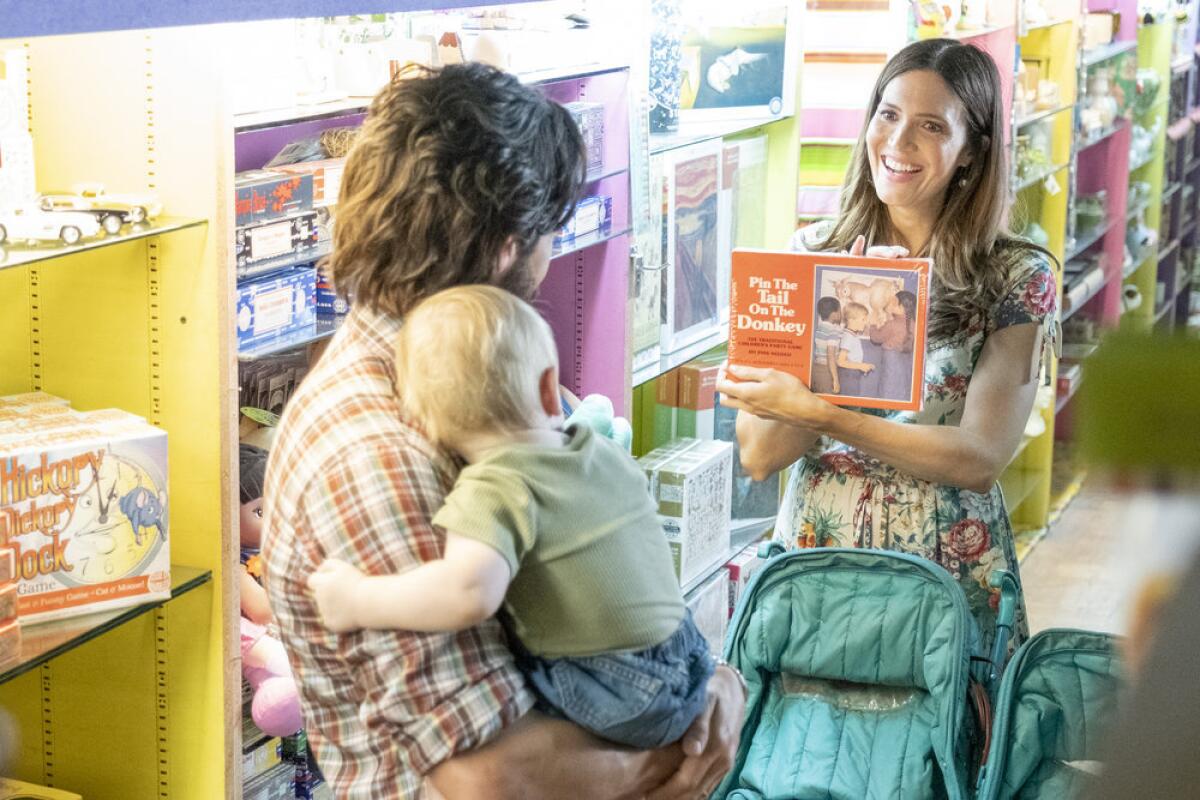
The final episode takes us inside Rebecca’s funeral. But that portion is entirely silent. Talk about the decision to not let us hear what Kevin, Kate and Randall had to say at the funeral. And did you actually script out what they were saying? It looked like Kate was singing.
It was scripted to be silent. I think the language we used in the script was that it was from Randall’s perspective, and it would be him, this man of so many words and so many feelings, just floating through the day. When my mom passed away, I stayed up literally the entire night: “People are expecting me to write the perfect eulogy, and I need to be funny, I need to be good.” And then I very much had the experience of that day, the morning afterwards, just kind of floated by in this haze. I was caring so much about how I was handling every moment and how I was scripting every word of the eulogy, but it was all kind of floating by like a bomb had gone off in my ears. I just barely remember any of it. And I wanted to try and capture that for people who had been in that space. So when we got to the funeral home that day, we gave Sterling, Justin, Chrissy ideas and areas to talk about and to improvise, basically, knowing that they weren’t really going to be heard. But I wanted the people that were sitting back to be reacting to something real. And it actually wound up being a very fun, funny, weird day. Mandy actually came, and then they brought her out. She was sitting backstage watching her own funeral.
The final words that are spoken on the series are the “I love yous” between Jack and Rebecca. When did you know those would be the last? And did you ever consider making the final words be “This is us,” as so many viewers were expecting?
The closest we ever came to that was, I believe, in the fifth episode of the show, where I think Kevin is talking about his painting. I think he says: “This right here, I think it’s us.”
In my mind’s eye, I always thought that the final words of the show would be some version of “I love you” between two characters — probably Mandy and Milo, but I wasn’t exactly sure how yet. I always thought that the final shot would be kind of what it is, which is a shot of a young family member taking in a parent and kind of locking in on something that they’re getting their heads around and understanding for maybe the first time, and then seeing them older and seeing their lives have continued through their children and grandchildren.
And then, as I said, we shot all the Jack and Rebecca and the kids stuff four years ago, and after we shot it, I put it away and I never looked at it. And it was weighing on me this past year because I’ve building towards this ending for so long. Now it’s like, we’re a couple of months from the ending, and I kind of have to look at it because if it’s not there, I have to adjust. Maybe it’s not good enough. I was so anxious about it, actually; I kept putting it off. And then Romina [Rey] and Julia [Grove], our editors, put together a rough assembly of the footage for me. I never do this, but [I] went downstairs to my wife, Caitlin [Thompson, who plays Madison], and was like: I have pieces of finale; do you want to watch it with me? It’s almost like I was too scared to watch it by myself in case it sucked. And we were so taken by it, and then it ended on that final shot of Randall looking to Jack and reacting to him. I felt like I almost was gonna start crying: We did it.
I want to talk more about this wish-fulfillment moment with Jack and Rebecca.
You’re dramatizing a person reuniting with the spirit of her husband. My thought was always, if you’re really breaking it down, her kids are around her right now saying, “I love you.” That’s filtering through. Shooting it was really quiet. You could [hear] a pin drop. I wasn’t allowing myself to feel too much; I’m more trying to step back and just view it through an analytic prism. But you couldn’t help but be swept away a little by the scope of it, and the size of the moment. And that night, I shot up in bed at 3 o’clock in the morning and I texted Ken: “We missed the shot because we were so taken by Milo and Mandy. We forgot to grab Mandy grabbing Milo’s hand, which is reflected by her having grabbed Sterling’s hand at the moment she passes.” So I had to call Mandy and Milo, saying, “You know that great scene that we were all crying over yesterday, on the death train saying ‘I love you’ to each other and goodbye? We have to get you back into the outfits and go shoot it so you can squeeze his hand.”
Three months. COVID delays. A ‘stupid pool.’ Milo Ventimiglia, Mandy Moore and Justin Hartley explain how they pulled off their interwoven episodes.
What were the conversations you and the writers had about handling Miguel in this sequence — how to honor the role he played in her life but also give this wish-fulfillment moment?
We talked about it a fair amount. We knew Miguel should be the last person she [Rebecca] should see before heading into that caboose space, aside from, obviously, she’s waiting for Kate to get there. We felt we had the right balance here. The other part of it all was, if you’re really kind of looking at what’s going on, obviously nobody knows exactly what’s going on in the mind of somebody who’s about to pass after suffering from dementia or Alzheimer’s, but while there are flashes of the adult kids on the train, she’s really very much focusing on people who are from the younger version of herself, when Miguel only would have been really a friend.
Did what you ultimately shot align with your vision for the finale?
It’s a weird thing, this ending, these final two, because I’ve been thinking about them for so long. Normally, when you think of something for that long, and you have it in your brain that specifically, you’re always kind of let down by the reality of it. [But] the first time I saw the ending of the finale, and basically the last 10 minutes — I’m not one to weep at the television show as much as people talk about that — it really got me. It just really moved me in a way that I don’t know that I’ve ever been moved by this show.
How did you decide what the other small but big moments would be, like Déjà getting pregnant and deciding to name her future son William?
I always had that one in my head for the end. I thought that it would be really fun at the end of the series, when so much sadness is going on, when Randall just lost his mom, for Randall to have a boy born into the family. But secondly, there was something about the idea that this estranged father, a birth father who he didn’t know in his youth, made enough of a mark on him that Randall’s eventual adopted daughter, who never met that man, would name her son after him. To me, it said everything about what family is, and what it means when we continuously are saying — and ending the show by saying — “just because somebody dies doesn’t mean they stopped being a part of the story.”
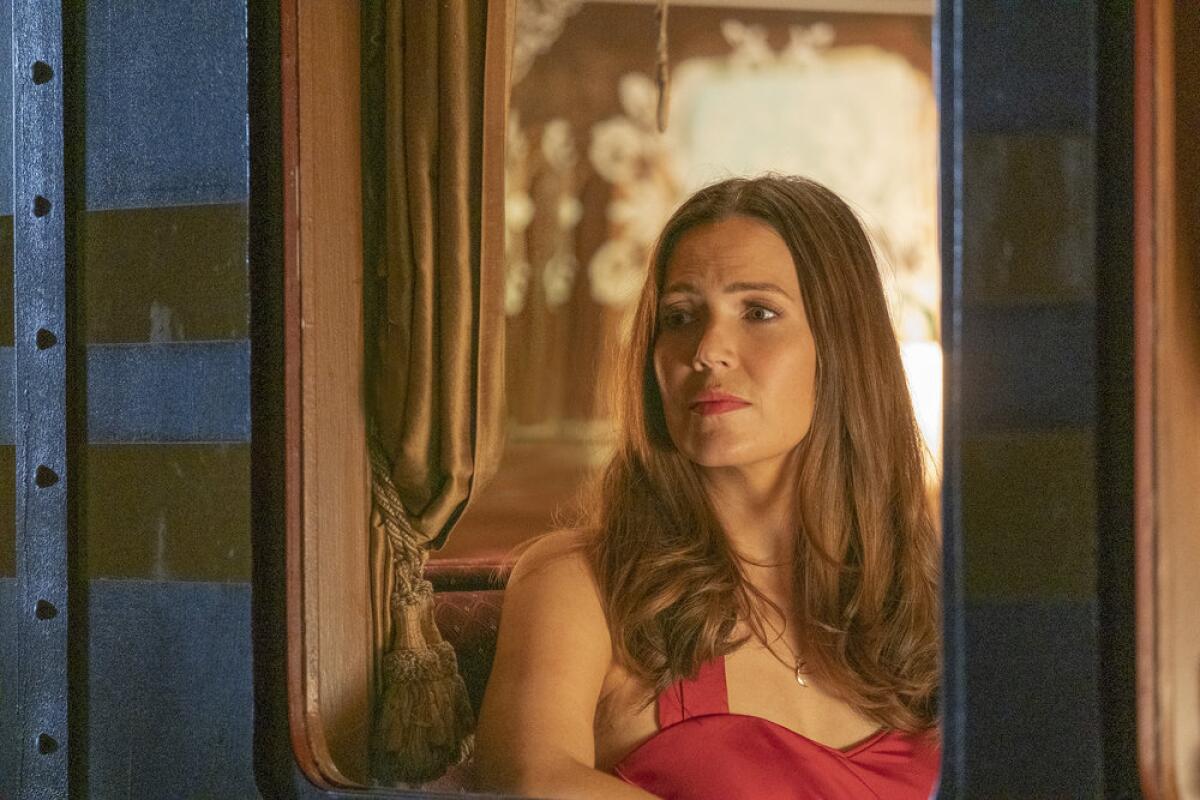
So many viewers have shared how “This Is Us” served as a much-needed outlet, myself included. I lost my father and my three grandparents during the run of this show. The amount of emotional processing it allowed for in subtle and direct ways is quite something. I know you’ve talked about losing your mother; you’ve also become a father since the show premiered. What has the show done for you? How do you think serving as the guide shaped your outlook?
As William would have said, I need a little bit of time and perspective for me to step back and figure that all out. It was never like I set out to say, “I’m going to do this to honor my mother.” At times, I would say, “Here I want to really capture what it was like being in my mom’s funeral.” We’ve explored so many issues — diseases and body image and anxiety and alcoholism and all these different things. But at the end of the day, if you had to pick one thing, it was about the loss of a parent — and, eventually, the loss of two parents. And it was about how you move forward after a devastating loss. In retrospect, and only in retrospect, this was one of two big things that I wrote after I lost my mom, who was the key figure in my life. And clearly I was chasing something, but I don’t know that I was chasing that literally.
Are there any other plotlines you wish you could have done or spent more time on?
We talked about this with the writers the other day. We were finishing our final Zoom. I was just going over notes on the final episode. And I was like, “So, what did we not do that we really wanted to do at one point?” And we really were hard-pressed to come up with them. We occasionally have storytelling ideas, like I had always been interested in the idea of an entire episode told through the POV of young Jack, who couldn’t see very much. And we ultimately kind of just felt like it would be too complicated for us to execute. And so we wound up doing it more as a cold open in an episode earlier this season. Storyline-wise, no. We wanted to get to this final episode and feel like when you’re reading a novel that you’ve really fallen into, often a family-sprawling novel that’s 400 pages, and you’ve been enjoying it and going with [a] family for generations and then you start feeling those pages getting thinner in the back, and you’re like, “Oh no, it’s getting close to the end,” and then you hit the word “Epilogue.” But then you close it, and it feels complete and rewarding and satisfying.
As you noted, fans have come up with many theories over the run of the show fueled by the mode of storytelling — the twists, the surprises, the reveals — and that included how it might end. Some viewers thought the back-and-forth moments in time were us experiencing what Rebecca was experiencing with her Alzheimer’s or that the show would end with the reveal that the whole show was Rebecca’s memories replaying before she dies. What did you make of how people were trying to guess the end game here?
Because of the way the show started, people could theorize a big gimmick for an ending to the show. A hypothetical literal reveal was that the whole series was jumbled up in Rebecca’s brain — it’s not to say that’s not what this was, but there was no device here. There was an element of that in that train episode at the end, because there’s that Rashomon effect of family, which is, like, one person remembers something one way, and the other person, who was at the same place, remembers it completely differently and out of order. There is a version of, “Oh, this whole series was this family retelling stories at Rebecca’s deathbed and at the funeral, and that’s why they’re all jumbled and out of order.” That’s not what the device literally was, but I think it had elements of that. In a weird way, that’s the fate of what the whole show is, and that’s why this storytelling device existed, which is we tell stories out of order, we let the past reflect the present, we constantly have these crosses and lives that seem innocuous or harmless but wind up being kind of gigantic threads in the entire yarn.
Just the other day, my wife and I are raising a little 2-year-old in a time of COVID, and we took him for an adventure out at the Long Beach aquarium, which for us was a really big step. And it was all overwhelming; he was melting down a little bit in the car going there, and we were worried about COVID once we got there. But then there are these couple of moments when your kid is just, like, running after something good. And he’s just really cute, and he’s really chubby, and he’s running, and he’s not scared of anything. And you’re looking at your little boy, and your brain almost like snaps and takes a picture and you’re like, “OK, yeah, I’m inside that moment.” And one day, hopefully long from now, when I’m on my deathbed and my life flashes before my eyes, that little chubby kid running through the aquarium will be one of the snapshots I see. That’s what we were trying to capture.
NBC’s ‘This Is Us’ is renowned for its twists and turns, uncommon in a family drama. Creator Dan Fogelman and the stars explain how they make the mysteries.
There aren’t many family dramas like “This Is Us” out there right now — it took relationships seriously; it took emotions seriously; it took feelings seriously.
It’s the No. 1 thing everybody can relate to — family. At its core, the most relatable part of the human condition is having parents, being a child of a parent, and having a childhood. We all have childhoods — some of our childhoods were incredibly s—, some of them are wonderful, but we all had them. I think it’s rare these days to have a show that’s just about family. They’re hard because they’re really execution-dependent. We tend not to have a ton of them in the same way [as] detective crime shows. They’re not harder to make, necessarily; they’re harder to have people latch onto in the compulsive way that people have been able to latch onto this show. So people will have to find those devices. And I have no doubt that somebody is going to figure out the next version of it and make the next “Six Feet Under” or “Friday Night Lights” or “Parenthood” or this show.
In the spirit of the show and this idea of taking in the small moments, describe that final day of shooting. I know everyone wanted to be there. I don’t know exactly what the final shot was, but I know everyone wanted to be there for the final day. What moment from the day stands out?
We had a lot of final moments. We never had like a really formal wrap; I grabbed inserts or little additional shots, and so I kept calling the crew back together, and people were like, “Is this just ’cause you don’t want it to ever end?” I got a note the other day from Michael Krikorian, who was the head of sound on the show for all six years. And he sent me a nice note at the end of it. He said, “I always thought that the bonds made and memories made during childhood you’ll never be able to fully capture as an adult, because they don’t have the same innocence and nostalgia as the relationships and bonds and memories that are formed during childhood.” And he said the experience of working on this show felt like it challenged that notion and he will look back on this group of people in this moment in time, when we made this television show that really spoke to all of us who were making it, and he’ll remember it with the same kind of nostalgia he did memories of his childhood. And that really struck me.
‘This Is Us’
Streaming: NBC.com, Peacock, Hulu and fuboTV
When: Anytime
Rating: TV-14 (may be unsuitable for children under the age of 14)
More to Read
The complete guide to home viewing
Get Screen Gab for everything about the TV shows and streaming movies everyone’s talking about.
You may occasionally receive promotional content from the Los Angeles Times.
